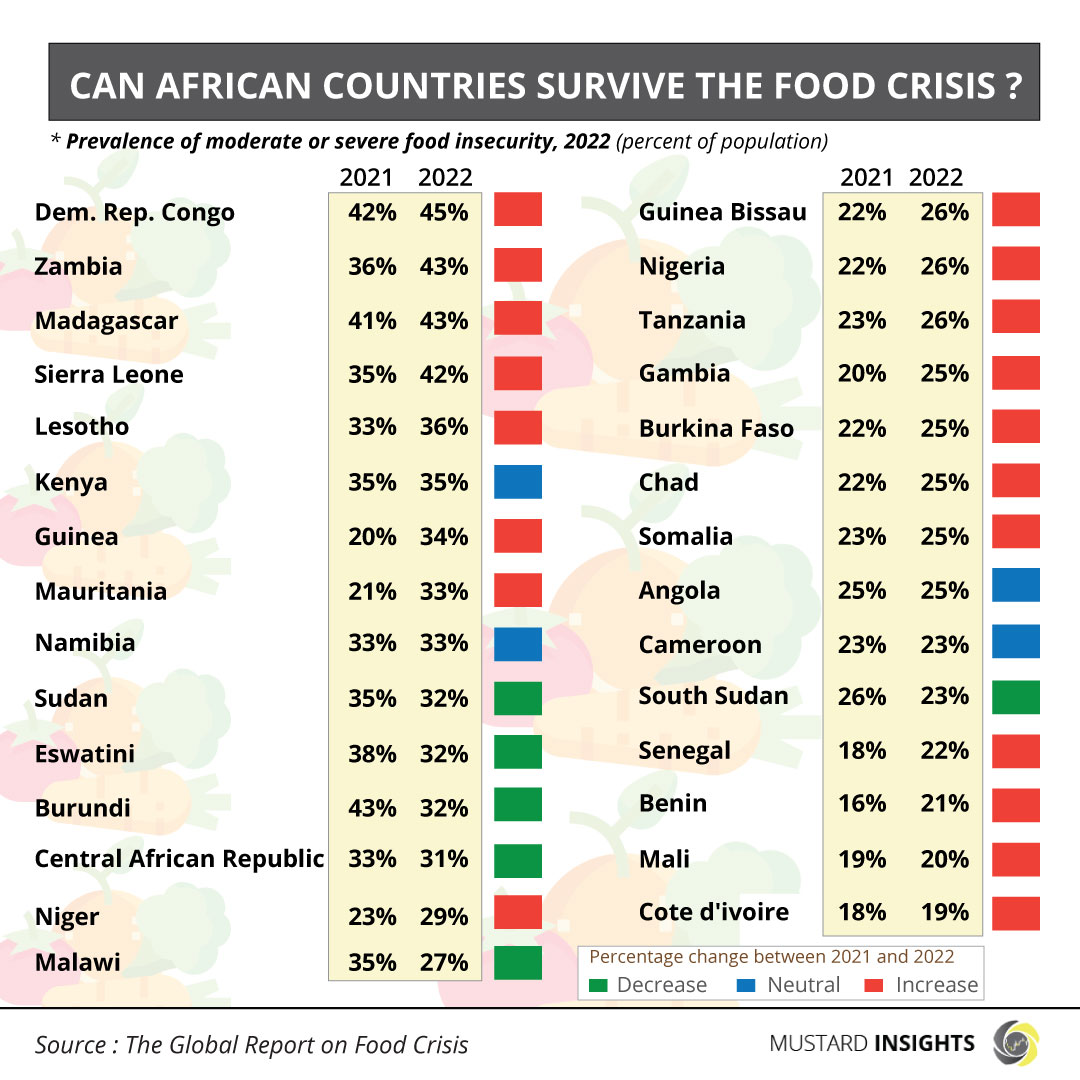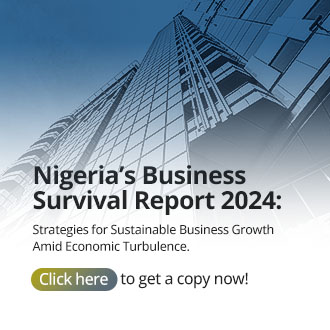193 million people presently live with acute food insecurity, indicating a nearly 40 percent increase from 2020, which was previously the worst year on record. According to the World Food Programme, 35 countries are most critically affected by food crisis.

This year, the World Food Programme released its sixth annual report on global food crises. It states that 193 million people presently live with acute food insecurity, a nearly 40 percent increase on 2020, which was previously the worst year on record. It also listed 35 countries as being the most critically affected. Twenty five (25) of those are in Africa, making the region the worst hit by quite some distance.
This crisis is of historical proportions, with the continent having not experienced such widespread hunger and food insecurity since 1945. That was the year the Second World War ended. It’s the worst food crisis the continent has seen in 77 years. So what has caused this crisis? So far, there are three main drivers: conflict/insecurity, economic shocks, and weather extremes.
Most countries in crisis often saw a combination of two or all three drivers, with every country having a primary driver. It was also noted that all countries with crises mainly driven by conflict were also affected by another driver, with the others often contributing to the conflict.
Conflict and insecurity
Conflict and insecurity were identified as the key driver in Ethiopia, South Sudan, the Central African Republic, DR Congo, Mozambique, Somalia, Sudan and South Sudan. Other countries included Burundi, Burkina Faso, Mali, The Niger, Chad and Cameroon.
Some of these countries are experiencing active conflicts, such as Ethiopia’s Tigray and Amhara regions, the northwestern region of the Central African Republic, the eastern parts of the Democratic Republic of Congo, and various states in South Sudan, Sudan, Burundi, and Somalia. These conflicts cut off market access, displace people, hinder trade, block humanitarian access, and scupper food production with farmlands often becoming battlegrounds.
A lot of countries bordering those experiencing conflict also suffered food insecurity, often through forced migration or displacement of citizens of neighbouring countries. People living in refugee camps often suffered acute food insecurity, as well as those in communes for internally displaced persons.
The Russia-Ukraine effect
The Russia-Ukraine conflict also plays a role in Africa’s food crises, with many African countries importing wheat and corn from the two countries, both of whom a major contributors to the world’s grain reserves. According to the International Centre for Migration Policy Development (ICMPD), 25 African countries import more than a third of their wheat from Russia and Ukraine. Unsurprisingly, countries like Somalia, Sudan, Congo, Kenya, and Eritrea, all heavily dependent on those two warring countries, presently experience food insecurity.
Economic shocks
Economic shocks drove the crises in countries like Sierra Leone and Nigeria due to rising food prices. Nigeria, as well as Ethiopia, South Sudan, and Sudan also struggled with insecurity affecting both local and international food supply chains, the socioeconomic effects of COVID-19, and currency depreciation. Factors like inflation and unemployment contribute to making people unable to afford foods with escalating prices. Countries that rely on food imports also found themselves vulnerable, having to cope with escalating wholesale prices
Weather extremes and climate change
Eight African countries saw weather extremes mainly drive their food insecurity, mainly in East, Southern, and Central Africa, putting 23 million people in food insecurity. Drought in Madagascar and Angola reached 40-year highs and reduced crop yields by 50-80%. Ethiopia, Kenya, Somalia, and Uganda also experienced severe drought, with below-average rainfall affecting Burundian harvests. Rainfall deficits also affected Niger, Cameroon, Chad, Mali, Sierra Leone, and central and southeastern Nigeria. Low rain in central Nigeria proved highly problematic as the region contributes a significant amount to the country’s crop production.
More shocks with a ray of hope
While some countries may see shortages alleviated as global supply chains continue to recover from COVID-19 disruptions, worldwide inflation may continue for some time, with the possibility of a recession. Grain and sunflower oil will remain high as the war in Eastern Europe continue to cause supply shortages, with that conflict also affecting natural gas supply and in turn fertilizer prices.
While one can only be optimistic that some resolution might be found to conflicts in continental Africa, there is a slight ray of hope. Eastern Africa’s Intergovernmental Authority on Development’s (IGAD) Climate Prediction and Applications Centre has announced that the region will see more rain this year than in 2020 and 2021. Countries like Burundi, Uganda, Ethiopia, and Somalia can look forward to a wetter 2022. However, most affected countries will still be heavily reliant on food aid.
Thoughts?
We won't share your email address. All fields are required.
